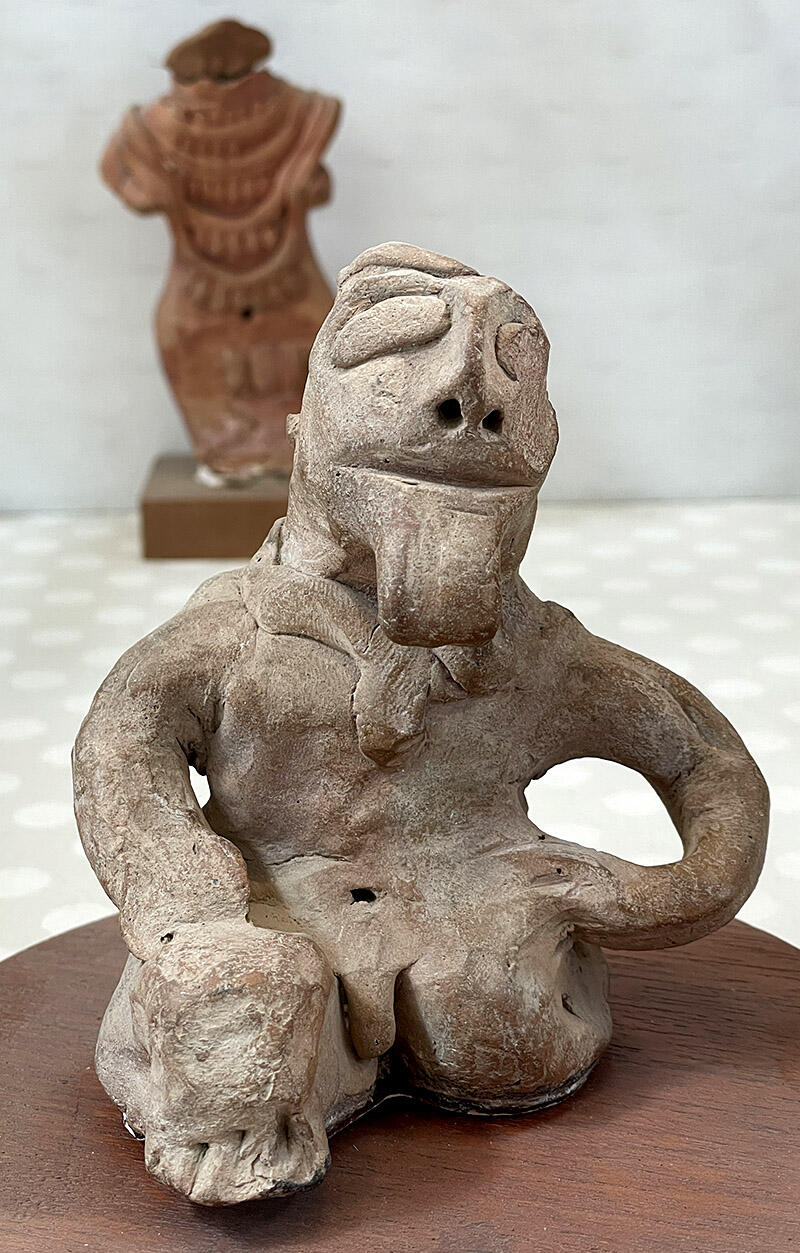Few Indus figurines exude so much character making it seem like it was based on a real person.
Dr. Kenoyer writes (Ancient Cities, pp. 101-102):
"Two seated positions are depicted in these sculptures, which can be compared to the seated positions of terracotta figurines (fig. 5.33 [above]) as well as to the anthropomorphic figures carved on seals (cat. nos. 24, 26). The basic posture has one knee bent to the ground and the other raised, so that one foot is forward, while the other is tucked beneath the buttocks. In some sculptures the right foot is forward and the right knee is raised (fig. 5.30), while in others the position is reversed (fig. 5.31). The raised knee is usually clasped by the corresponding arm while the other arm rests on the opposite knee or thigh. In all of the sculptures where the hands are visible, they rest directly on the knee or thigh and do not carry any form of symbolic object or weapon (fig. 5.31).
"The partly kneeling position can be interpreted as supplication or subservience, but this is also a standard position for sitting in readiness for action. With one swift movement a person can stand up and move in any direction. In contrast, the yogic pose depicted on many of the seals (see cat. no. 23), heel to heel with widespread knees, is clearly a ritual posture that would require considerable effort to stand up.
"Since most figures that can be identified as deities are shown standing with feet placed firmly on the ground or seated in the yogic posture, the stone sculptures from Mohenjo-daro are generally thought to represent clan leaders or ancestral figures. Comparisons have also been made with eight seated figures depicted on a silver vessel attributed Bactria and generally contemporaneous with the late phase of the Indus cities. 04 Although these figures are seated broadly similar manner, their hair styles and the presence
of hand-held objects represent an iconographic tradition different from that of the Indus sculptures."

